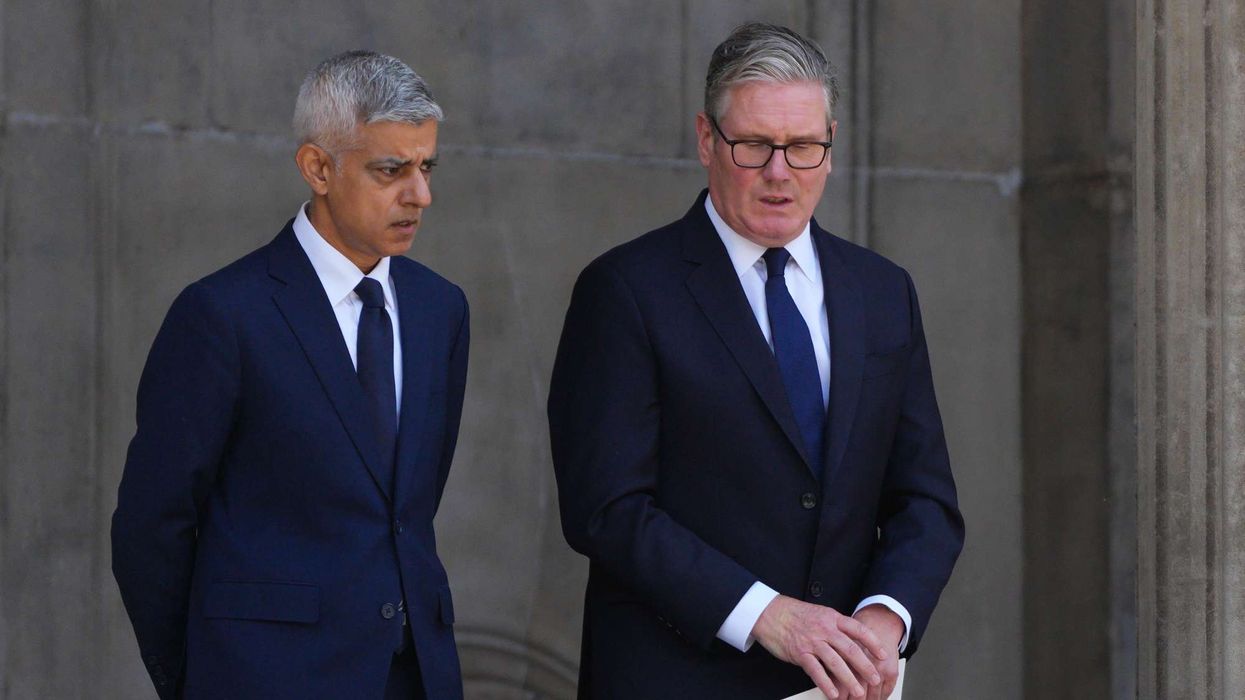COMMUNITIES up and down the country, from Portsmouth to Birmingham, from Manchester to Newcastle, are deeply concerned about extremism.
Since my appointment as Lead Commissioner for Countering Extremism, I’ve spent the last few months travelling the country.
I've already engaged with 300 people and visited 10 cities and spoken to academics, experts, faith leaders, women's organisations, youth groups, civil society groups and others.
In academia and in policy debates, there is a discussion about what extremism means. But when you speak to communities they know it when they see it. The hatred, the dehumanisation of others and the undermining of democratic values and human rights.
In Newcastle and Luton, repeated Far Right marches have left many Muslims scared and increasingly isolated, while businesses are feeling the impact of the disruption. I spoke to a group of Muslim women who said they were too scared to leave the house following the threatening Punish a Muslim Day letters.
In Leicester activists were worried that extremists from minority backgrounds sought to divide communities on religious, ethnic and racial grounds through the promotion of hate. They told me how religious extremists and fundamentalists of all persuasions would promote sectarianism and hate, behind closed doors.
Activists from Black, Asian, Minority and Ethnic communities shared with me their concerns about intolerance and extremism in their own neighbourhoods. Women in particular suffer the consequences of extremism which is often misogynistic in nature; a denial of basic rights and intimidation.
Whether its Birmingham or Bradford, Leeds or Liverpool, I was struck by the view that in 2018 the stereotypes of far-right thugs or Islamist hate preachers don’t always ring true.
The tactics of extremists are changing. This includes a new-found professionalism, an intellectualising of hate and the misuse of human rights language.
Social media has created new opportunities for the spread of hateful content and how ‘keyboard bigots’ who spread conspiracy theories, are having an increasing influence out in communities
But we have just scratched the surface. We need to look into the scale and harm of extremism, and ask difficult questions about extremism in communal settings, such as schools and places of worship. Whether it’s Far Right, Islamist or other forms of extremism, we need to investigate extremists' changing tactics.
However, my second observation is that I’ve also heard inspiring stories of people of faith and no faith, of civil society groups and NGOs who do not tolerate hatred and division in their communities.
We saw it in the powerful messages of defiance at the recent anniversaries of the terrorist attacks. We see it in the brave individuals and groups challenging extremists. They are small charities, they are faith groups, they are frontline council staff. Many of them work with young people, using creative approaches – such as sport or music or even food – to build resilience and arm them with the critical thinking needed to resist the tempting simplicity of extremist messages. In all faiths, I see impressive faith leaders standing up to the hate preachers in their own communities.
I’ve been doing this job for a few months, but I’ve been challenging intolerance all my life.
From the days when as a young activist in Muslim organisations, I raised the issue of gender inequality or when I called out the hatred and intolerance being peddled by preachers, I know that too often those that speak out receive more abuse than support.
For instance, those brave Sikh activists who received a torrent of abuse from fellow Sikhs when they challenged those who had expressed and invited support for Tommy Robinson and his anti-Muslim views. We need to look into how we better support those willing to speak out.
My third observation is that some people are nervous about the word ‘extremism’ itself. This is no surprise when the public debate is increasingly polarised and very inconsistent. On my journey it’s become clear that while we are comfortable talking about Far Right extremism, we are nervous when it comes to Islamist extremism or other religious based forms of extremism. This lack of consistency is a real problem, because you cannot tackle one without tackling the other. Far Right and Islamist extremism feed off and reinforce each other.
In order to challenge far right extremism, we must be more confident in tackling Islamist extremism; the opposite is also true.
We must recognise that all forms of extremism pose a threat to our multicultural and diverse communities. If we’re going to challenge extremism we need to better understand it.
This week, we begin that work. There is already some good academic evidence out there. So, we are collecting it and looking at what the gaps are. We will then decide which gaps are most urgently in need of filling and commission expert research to fill those gaps.
At the same time, we will ask the public to share their evidence. And I will also visit communities to speak to people about their experiences. I want to hear from victims, and their families. Later this year we will open a public call for evidence. The Government has committed to sharing information. I will also be working with police, councils and regulators to share their evidence.
Chronic extremism is a threat to all out communities, and we all have a role to play in challenging it. I know it’s an issue that makes many people nervous. But I also know that those that feel the impact want it to stop. I believe we have the start of a powerful counter extremism movement, and I hope many of you will join me on this journey.
For more, see the Extremism Commission blog: https://extremismcommission.blog.gov.uk/











